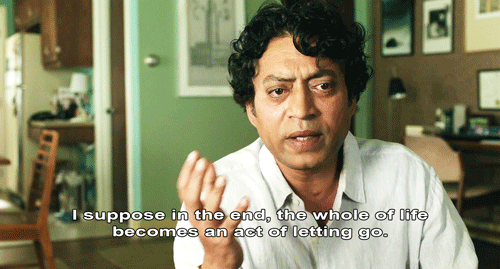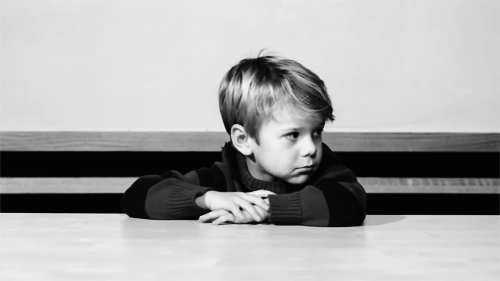I have to get a new blog.....
This is upsetting. I feel at home here..
I just feel like I can't let go.. I don't like change.
I am bad at goodbyes..... This is the most I could muster up:
Amanda Keightley
Hello, Nice to meet you.
Tuesday, May 21, 2013
Wednesday, May 8, 2013
How can I use video creating or podcasting int he classroom?:
The main reason I enjoy video creation, viewing, and podcasting is because the new and exciting technology takes students from this:
to this:
(Warning: possible exaggeration above)
But in all actuality, students respond well to technology as well as interactive learning.
Video Creating is great for this. Students can make videos that demonstrate or emphasize concepts that are being learned in the classroom. These types of projects can appeal to every student. Outgoing students can be in front of the camera, shy or introverted students can be behind the camera, tech savvy students can be part of the editing process, and every student can have a part in a current form of interactive learning.
Podcasts are exciting to me because I love the idea of a flipped classroom. This is where the students do traditional homework during class time and listen to lectures as homework on their own time. In history I would use this technique to generate more class discussion and boost writing assignments. Having the resources available to allow students to listen to lecture outside of class makes this possible. With podcasting students can receive all the information they need about dates, concepts, themes, and controversies before they come to class and then have the entire time in class to work in groups or one on one with the teacher. Class discussions are a important way for students to learn. They often learn better when trying to express their own ideas and thoughts about a certain topic and sharing in small groups in nonthreatening. One thing I think students lack is the ability to write good papers quickly. There is not enough writing taking place in the classroom and history is a great time to make sure students are getting a lot of those skills they will need when they move onto college. Podcasts will allow students to listen to the lecture on their own time and then come to class to brainstorm, talk among their peers, or with the teacher to get started on the writing process. This way students have the teacher on hand if they run into any difficulties.
The main reason I enjoy video creation, viewing, and podcasting is because the new and exciting technology takes students from this:
to this:
(Warning: possible exaggeration above)
But in all actuality, students respond well to technology as well as interactive learning.
Video Creating is great for this. Students can make videos that demonstrate or emphasize concepts that are being learned in the classroom. These types of projects can appeal to every student. Outgoing students can be in front of the camera, shy or introverted students can be behind the camera, tech savvy students can be part of the editing process, and every student can have a part in a current form of interactive learning.
Podcasts are exciting to me because I love the idea of a flipped classroom. This is where the students do traditional homework during class time and listen to lectures as homework on their own time. In history I would use this technique to generate more class discussion and boost writing assignments. Having the resources available to allow students to listen to lecture outside of class makes this possible. With podcasting students can receive all the information they need about dates, concepts, themes, and controversies before they come to class and then have the entire time in class to work in groups or one on one with the teacher. Class discussions are a important way for students to learn. They often learn better when trying to express their own ideas and thoughts about a certain topic and sharing in small groups in nonthreatening. One thing I think students lack is the ability to write good papers quickly. There is not enough writing taking place in the classroom and history is a great time to make sure students are getting a lot of those skills they will need when they move onto college. Podcasts will allow students to listen to the lecture on their own time and then come to class to brainstorm, talk among their peers, or with the teacher to get started on the writing process. This way students have the teacher on hand if they run into any difficulties.
Friday, April 26, 2013
PART ONE:
"Do as I say, not as I do" does not work with students. In order for them to take plagiarism and copy rights laws seriously the teacher needs to also. Hypocrisy is not popular with anyone, especially students. To me, that is the major reason teachers need to pay close attention to copy right laws. If a teacher is going to ask students to practice academic honesty, they should as well. PRACTICE WHAT YOU PREACH.
Another reason teachers need to use follow copyright laws is to stay moral as a teacher. Being a good role model for students is a large part of the job. Students wont respect a teacher that breaks laws and doesn't seem to have a moral compass. Students who don't respect a teacher wont learn from that teacher and if enough teachers lose the respect of their students there will be no learning.
PART TWO:
A lot of the stuff in the chapter is very familiar to me simply because I know from being a student practically my entire life what is affective and what is not! Presentations need to be clear, easy to follow, and effective.
One this I had never thought about but have noticed is the Signal-to-Noise Ratio. I had a teacher in middle school that had obviously just learned all of the new tricks to power point because he included anything and everything! The slides were, to say the least, noisy! The noise cuts away from being able to clearly understand the slide and its information. At first I thought the examples of the "fixed" slides were way to boring but the continuation of the section which shows affective ways to use nonessentials was really nice! I particularly like the slides that included dark backgrounds with easy to see graphs over them.
Most of what I saw in the chapter seems common sense to me. Use the effects that make the slide visually appealing but most importantly CLEAR! I already know not to jumble up slides with a million words! The slide should be an outline but not do all the talking. The teacher should do all the talking and the slides should visually complement the lecture or lesson. Like in the text with images second on page 154 where the pictures are placed behind the words and complement each other rather than fighting for the viewers attention.
Another thing I thought was very interesting was the Picture Superiority Effect. I like the idea of using pictures to help recall the information. I use this in my notes all the time for classes here at WOU! I write a key term, concept, or story and then I draw a little picture to help me remember. A lot of the times I find myself drawing the same picture that is on the slide.
These are all pointers I can use and continue to use in my presentation. A short lesson on how to create slides like these would be useful to high school students when I am a teacher. It is important for students to be able to display information clearly and present to a group affectingly.
In the power points I have used over the years my pictures have not be used as well as they could have been. I also think I could cut down on text in the slides pretty often. Another tip that my older power points could use is to split up a full slide into more than one.
PART THREE:
Prezi Presentation.
Ahhh. It's about a pirate
CLICK HERE TO VIEW!
"Do as I say, not as I do" does not work with students. In order for them to take plagiarism and copy rights laws seriously the teacher needs to also. Hypocrisy is not popular with anyone, especially students. To me, that is the major reason teachers need to pay close attention to copy right laws. If a teacher is going to ask students to practice academic honesty, they should as well. PRACTICE WHAT YOU PREACH.
Another reason teachers need to use follow copyright laws is to stay moral as a teacher. Being a good role model for students is a large part of the job. Students wont respect a teacher that breaks laws and doesn't seem to have a moral compass. Students who don't respect a teacher wont learn from that teacher and if enough teachers lose the respect of their students there will be no learning.
PART TWO:
A lot of the stuff in the chapter is very familiar to me simply because I know from being a student practically my entire life what is affective and what is not! Presentations need to be clear, easy to follow, and effective.
One this I had never thought about but have noticed is the Signal-to-Noise Ratio. I had a teacher in middle school that had obviously just learned all of the new tricks to power point because he included anything and everything! The slides were, to say the least, noisy! The noise cuts away from being able to clearly understand the slide and its information. At first I thought the examples of the "fixed" slides were way to boring but the continuation of the section which shows affective ways to use nonessentials was really nice! I particularly like the slides that included dark backgrounds with easy to see graphs over them.
Most of what I saw in the chapter seems common sense to me. Use the effects that make the slide visually appealing but most importantly CLEAR! I already know not to jumble up slides with a million words! The slide should be an outline but not do all the talking. The teacher should do all the talking and the slides should visually complement the lecture or lesson. Like in the text with images second on page 154 where the pictures are placed behind the words and complement each other rather than fighting for the viewers attention.
Another thing I thought was very interesting was the Picture Superiority Effect. I like the idea of using pictures to help recall the information. I use this in my notes all the time for classes here at WOU! I write a key term, concept, or story and then I draw a little picture to help me remember. A lot of the times I find myself drawing the same picture that is on the slide.
These are all pointers I can use and continue to use in my presentation. A short lesson on how to create slides like these would be useful to high school students when I am a teacher. It is important for students to be able to display information clearly and present to a group affectingly.
In the power points I have used over the years my pictures have not be used as well as they could have been. I also think I could cut down on text in the slides pretty often. Another tip that my older power points could use is to split up a full slide into more than one.
PART THREE:
Prezi Presentation.
Ahhh. It's about a pirate
CLICK HERE TO VIEW!
Sunday, April 21, 2013
MY WEBSITE
Warning: This website contains material that is known to provoke the following feelings:
To view Amanda Keightley's Website! CLICK HERE!
Mind Blowing is expected.
Enjoy:)
- Jelousy
- Desire
- Manliness
To view Amanda Keightley's Website! CLICK HERE!
Mind Blowing is expected.
Enjoy:)
Friday, April 12, 2013
Wiki2.0
Exploring wiki2.0!
The first place I visited was twtpoll which allows for people to create online pools and surveys. This site is intended for all audiences. and can be used by students or teachers in the classroom at any grade. I thought this site was extremely easy to use. All you have to do is click the buttons on the top of the page to either create a poll of create a survey! Here is an example of a poll I made that you are encourage to take anytime between now (4-12-2013) through next year. This can be a useful tool in the classroom. One idea I had for this site was to take polls on how well my students understand the content I am teaching. Each student can complete a poll or survey and I can review the results and determine what material needs to be covered more thoroughly. Another way this can be useful is to create a poll for classroom management. For example I can discover what type of snack the call would want on a special day, students knowledge of classroom rules after opening week, and other student preferences for how the class is ran. This site was super easy to use which is its major perk. The only thing that didn't enjoy about the site is that the amount of advertising was extremely annoying
The second place I discovered using wiki2.0 was Sweetsearch.The purpose of sweetsearch is to give students a reliable place to find research for their classes. Each website that is accessed through this website has been approved by a research team, librarians, or teachers as reliable. This site is specifically targeted at students but the age of the audience is unspecified. The website is set up like the popular search engines used by students already. There is a search bar where students can type their desired topic and press "go" to enjoy academic based findings. That is the major plus to using this site. Everything I searched gave me academic material rather than with a google search where anything could pop up in the results. Other features included on the sweetsearch homepage are a number of tool bars. These included:
- Teaching We Research Skills: Which allows educators and students to learn some effective research skills for academic uses.
- Sweetsearch For Me: Which is geared towards younger students starting out in their research.
- Sweet Search Today: This allows students to explore and learn new information daily.
- Sweetsearch Biographies: Over 1,000 profiles of people students may want to research.
- Sweetsearch Social Studies: A search engine specifically for research in social studies.
The third site I explored using web2.0 was Historypin. This site is described as a place where anyone can go to share historical pictures or stories. The site collects historical photos to create a digital history of the world. This site is for anyone who has a historical story or picture that can contribute to the site. Sometimes history is thwarted by overwhelming facts, politics, and a disconnect from the time. This site can be used in social studies classroom to help students gain a more personal interaction with history. Students can learn about the Kennedy Space Station in a book or through research but historypin will allow students to be connected to the time. They get a feel, through pictures, of what life was like during that time. A lot can be discovered from historical pictures for example this picture taken November 18 1969 shows children standing around waiting for Apollo 12 to blast off. The children are posing for this picture only hours before the shuttle started its journey to the moon. Students are not only learning the date and specifics about the space shuttle but they can see the popular dress of students, their interactions with each other, and compare these pictures to the type of pictures taken today. For example in this picture I imagine any number of my male peers would probably try and make the space shuttle appear to be a penis by laying down in front of it with a particular camera angle. Does this show that students were more mature during this era? Or were they just more heavily supervised and disciplined? The only problem with this site is that it hasn't grown enough. There needs to be more interaction on the site for it to be useful for all historical times but they have a very good platform that can be used in the classroom to instill some sites of the time to students.
Tuesday, April 9, 2013
Fishies
The coolest part of my blog BY FAR!!! are my fish! They are colorful and beautiful and if you decide to visit my blog you can feed them!
PLEASE DON'T OVERFEED THE FISH! They will eat until they virtually die.
Enjoy these pictures of cute fish... I promise I am not obsessed with fish. I just think they are the most wonderful part of my blog.. SO FAR.
One Fish
Two Fish
Red Fish
Blue Fish
For more fish fun visit: Sam's Blog
PLEASE DON'T OVERFEED THE FISH! They will eat until they virtually die.
Enjoy these pictures of cute fish... I promise I am not obsessed with fish. I just think they are the most wonderful part of my blog.. SO FAR.
One Fish
Two Fish
Red Fish
Blue Fish
For more fish fun visit: Sam's Blog
Monday, April 8, 2013
Blogs in School!?!
If done correctly blogging with students could be an
effective learning tool in the classroom. The world is changing and technology
has become one of the biggest influences in a child’s education and life. It
can be argued that most of this new technology acts as a distraction from
learning. I believe that teachers can battle these distractions by using the
many beneficial tools computers, gaming systems, the internets, and cell phones
have to offer. Blogging is one of the tools students and teachers can share to
increase learning, sharing, reading, and writing.
To make these tools effective students need to be
eased into the world of educational technology, not thrust. Students need to
get a feel for what blogging is before they are asked to be experts in the
task. First students need to be introduced to blogs, and then gain experience
interacting on blogs, and finally students can be integrated into a paperless
classroom. Often times if students see a task as too hard or overwhelming
because they do not understand it they will reject the new ideas all together.
I know this because I was one of those students and I know many of my peers who
were the same way. Before having students jump into creating, writing, and
exploring their own blogs a teacher should use his or her own blog to help
students get a feel for the educational side of blogging. All kinds of
information can be given to students via blogs. Students can explore their
teacher’s blog to find test dates, office hours, contact information, study guides,
reading assignments, hand outs, and basically anything else that will help the
students know more about the class. Teachers can start off by using their blog
as a communication devise for their students. The next step in getting students
using blogs is to have them interact. They can respond to a teacher’s posts or
find and educational blog that they can respond to academically. This gets the
students involved in safe and educations public writing. Older students adapt
to technology quickly and can most likely be encouraged to get their own blog
shortly after they start interacting with them.
Being safe on the internet and blogs is very important especially when dealing with high school students who are often rebellious. Communication is key when it comes to student blogs. Both students and teachers need to be informed about what the blogs are for and how they will be monitored. Security needs to be implemented when using these blogs to protect the students, their identities, and the school. The use of this blog needs to be specified as much as possible to students and parents so that they understand the devise is being used in an appropriate and educational setting. As the leader in this system, teachers can limit the activity done by blogs to keep the students in a safe and educational environment. Teachers need to be active in approving posts and limiting student's access to other blogs on the internet. When used safely blogs can be affective in accessing knowledge, homework, writing, participation, expression of ideas, and intellectual output.
Before giving students blogs the focus needs to be on
creating a safe workplace where they can be comfortable sharing their work,
thoughts, and ideas. The main safely precaution for blogs is to make every
expectation for their work clear. A blog will give each student a certain
amount of freedom, but it needs to be evident to the entire class that they
cannot go overboard with their freedom. Teachers need to manage the type of
posts students are creating as well as who they are reaching out to through
their blog. Developing a blog meets each requirement for the Oregon Educational Technology Standards. Students can be allowed to use creativity, innovation, communication, research, critical thinking, digital citizenship, and learn how forms of technology operate. Blogs also include the use of the essential skills called for by the Oregon Educational Technology Standards. Basically any skill that the standards call for can be implemented using blogs. Reading, writing, speaking, mathematics, analyzing, community involvement, cultural diversity, and even teamwork skills. For example to reach the standard of community involvement students can be encouraged to find blogs in nearby communities and respond with their own ideas on how they can influence the cause discussed in the communities blog. This also reaches the standards critical reading and writing, cultural diversity, team work, and creativity. The National Educational Technology Standards can also be met by using blogs in the classroom. Inspired learning, introduce work influences, digital resposibility, leadership professionally, and the introduction of digital tools are all present in using blogs to conduct learning assessments. Students can be encouraged to make connections with blogs that are similar to their professional dreams in the future. Future educators, like myself, would find blogs that discuss the profession. Students will interact with the blogs and learn how to make professional connections.
A lesson plan I found on Good Apps for Education was The Great Immigration Debate. I think this is a great lesson and is an important hot topic today for students. There is always controversy following newcomers especially with minorities still finding their foothold in America. The lesson uses a number of Google ran technologies that will be helpful for students to explore. Google Docs, Good News Timeline, and Google Image Search. The lesson plan gives students a number of video tutorials that will push them in the direction of using these tools to meet standards. Students use analytical skills as they research major trends in American history concerning immigration. Students share their finding and personal feelings in a discussion based Google Document with allows them to interact with their peers, work on writing skills, research skills, leadership in ideas, and teamwork as students start to feed off of each others responses. Students use their critical reading skills to explore readings included in the lesson plan. Teamwork is done as students divide into teams where discussion and future research takes place will also working on communal working skills. After completing the group work and research questions the students will use Google Docs to create a presentation. This uses creativity skills, teamwork, leadership skills, and responsibility,
Subscribe to:
Posts (Atom)














